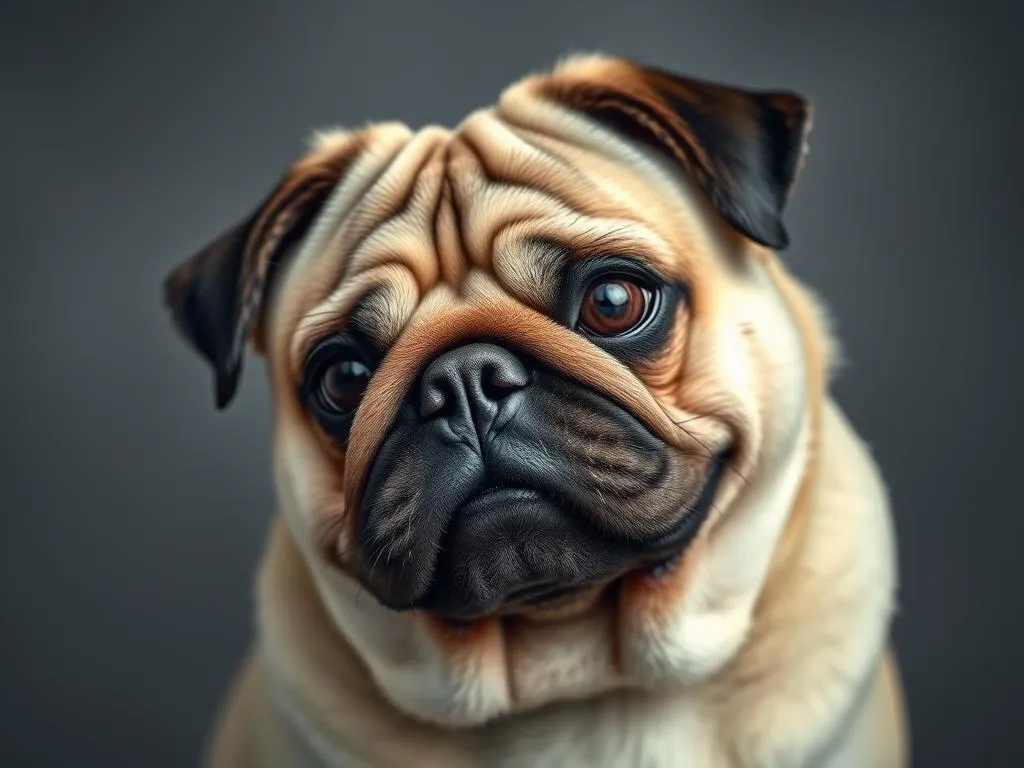
Introduction
Pugs are one of the most beloved dog breeds, known for their charming personalities, playful nature, and distinctive appearance. With their wrinkled faces, curled tails, and compact bodies, pugs often win the hearts of dog lovers around the world. However, as with many breeds, potential pet owners often wonder about their unique characteristics, including the question: how much do pugs smell? Understanding pet odors is crucial for maintaining a healthy environment for both pets and their owners. This article aims to explore the various factors that contribute to the smell of pugs and provide practical tips to manage it effectively.
Understanding Pug Characteristics
Physical Traits
One of the first things you notice about pugs is their unique physical traits. These small dogs typically weigh between 14 to 18 pounds and stand about 10 to 14 inches tall at the shoulder. Their round heads, short snouts, and expressive eyes contribute to their endearing look. However, these characteristics also play a role in their overall health and odor levels.
Pugs have distinctive wrinkles on their faces and bodies, which, while adorable, can be a breeding ground for bacteria and odor if not properly cared for. Their short, smooth coat is relatively easy to maintain, but it can still harbor smells if they are not adequately groomed.
Common Health Issues
Due to their brachycephalic nature, pugs often experience breathing difficulties. This can lead to excessive panting, which may contribute to a buildup of odor due to saliva and moisture accumulation. Additionally, pugs are prone to various skin conditions, such as dermatitis and allergies, which can exacerbate their smell.
Understanding these common health issues is vital for any pug owner, as they directly relate to the potential for odor and overall comfort for your furry friend.
Natural Causes of Smell in Pugs
Skin and Coat
The skin and coat of pugs can significantly contribute to their odor. The wrinkles and folds on their bodies can trap moisture, dirt, and food particles, leading to unpleasant smells. It is essential to clean these areas regularly to prevent odor retention. Pugs have a short and smooth coat that requires minimal grooming, but neglecting their skin can lead to issues.
Ears and Eyes
Pugs are also susceptible to ear infections due to their floppy ears, which can trap moisture and bacteria. This can lead to foul-smelling ear infections that require veterinary attention. Additionally, tear staining is common in pugs, resulting in a buildup of bacteria around the eyes that can produce an unpleasant odor.
Mouth and Breath
One of the most significant contributors to a pug’s smell is their mouth and breath. Dental hygiene is often overlooked, but poor dental care can lead to bad breath and other health issues. Common dental problems, such as periodontal disease, can produce a strong odor that may not be easy to mask.
Environmental Factors Contributing to Odor
Living Conditions
The living conditions of your pug play a crucial role in their overall odor levels. A clean and tidy environment can significantly reduce the likelihood of unpleasant smells. Regular cleaning of their living areas, bedding, and toys is essential for maintaining a fresh atmosphere.
Grooming and bathing are also vital components of odor management. Regular grooming sessions help remove dirt and debris from their coat, while baths can help eliminate lingering smells.
Diet and Nutrition
What you feed your pug can influence their overall smell. Certain types of food, especially low-quality commercial dog foods, can lead to gas and foul odors. It’s essential to choose a nutritious, high-quality diet that contributes to your pug’s overall health and minimizes unpleasant smells.
Consider incorporating odor-reducing ingredients into their diet, such as probiotics, which can help maintain a healthy gut and reduce gas.
Managing and Reducing Pug Odor
Regular Grooming Practices
To keep your pug smelling fresh, establish a regular grooming routine. Bathing frequency can vary, but a good rule of thumb is to bathe your pug every 4 to 6 weeks, depending on their activity level and odor. Utilize a gentle dog shampoo to avoid skin irritation.
Pay special attention to their wrinkles and skin folds during bath time. Use a damp cloth to clean these areas thoroughly, ensuring you dry them well afterward to prevent moisture buildup.
Dental Care Routines
Maintaining your pug’s dental health is crucial for reducing bad breath. Aim to brush your pug’s teeth at least two to three times a week using a toothbrush and toothpaste specifically designed for dogs. Regular dental check-ups at the vet are also important to catch any potential issues early.
Ear and Eye Maintenance
Cleaning your pug’s ears and eyes regularly can help prevent infections and odors. Use a vet-recommended ear cleaner to wipe down the insides of their ears gently. For tear stains, consider using a damp cloth or specially formulated tear stain removers to keep the area clean and odor-free.
When to Seek Veterinary Help
Signs of Underlying Issues
While some odor is normal for pugs, unusual smells may indicate underlying issues. If you notice a strong, foul odor coming from your pug’s ears, mouth, or body, it may be time to seek veterinary attention. Conditions such as infections, allergies, or dental problems can lead to increased smells and discomfort.
Regular Check-ups
Routine veterinary visits are essential for ensuring your pug’s overall health and catching potential issues early. Regular check-ups can help maintain your pug’s hygiene and well-being, reducing the risk of odor-related problems.
Conclusion
In summary, pugs are delightful companions, but understanding how much do pugs smell is essential for responsible ownership. By recognizing the unique characteristics of pugs, the natural causes of their odor, and the environmental factors that contribute to it, you can take proactive steps to manage and reduce smells.
Regular grooming, dental care, and proper living conditions are vital in keeping your pug fresh and healthy. With a little effort, you can enjoy all the joys of pug ownership while minimizing any unpleasant odors.
FAQs
Do all pugs smell?
Most pugs have a distinct smell, but the intensity can vary significantly based on their health, hygiene, and living conditions.
How often should I bathe my pug?
Bathing every 4 to 6 weeks is generally recommended, but this can vary depending on your pug’s activity level and odor.
What can I do for my pug’s bad breath?
Regular dental care, including brushing teeth and providing dental chews, can help manage bad breath in pugs.
Are there specific foods that can reduce odor in pugs?
High-quality dog food that includes probiotics and is low in fillers can help reduce gas and odor. Always consult your vet for dietary recommendations specific to your pug’s needs.
When should I take my pug to the vet for odor issues?
If you notice a sudden increase in odor or if it is accompanied by other symptoms, such as itching, redness, or swelling, it’s advisable to consult your veterinarian.









